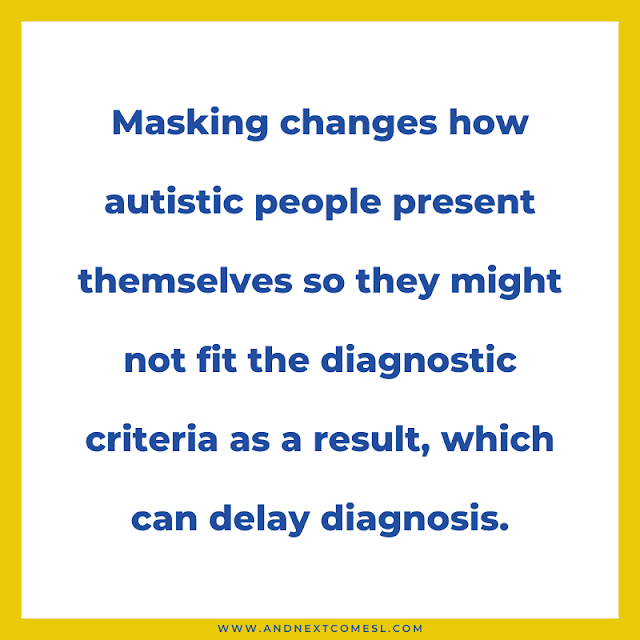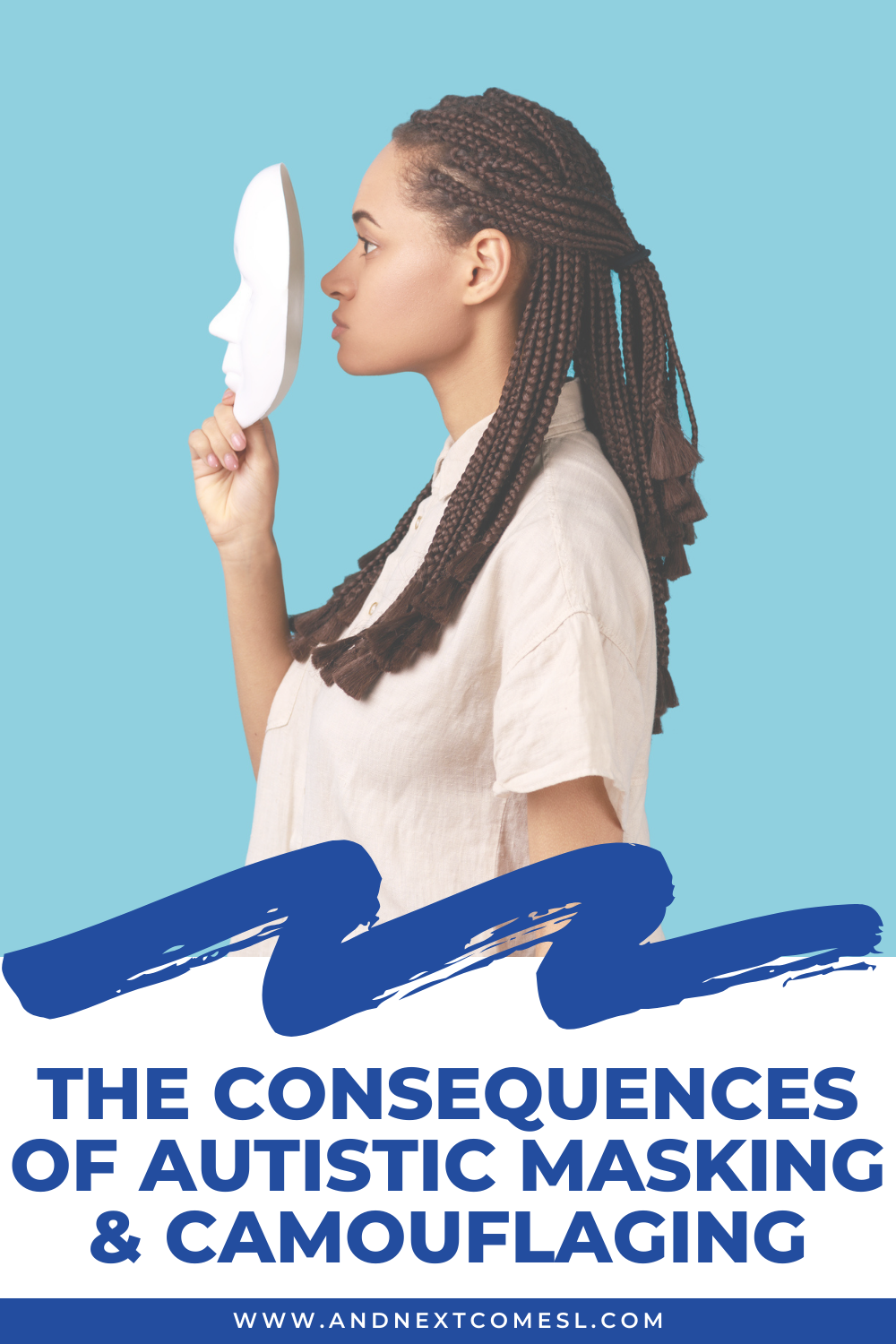Autistic masking might be a useful coping and social survival strategy, especially in the short term. It does, however, come at a cost. There are many potential long-term effects that are harmful or damaging, as you will see.
Everything from mental health to identity to even diagnosis can be impacted by autistic masking and camouflaging. There's even some recent research that's exploring these effects (e.g, Cage et al., 2018; Cage & Troxell-Whitman, 2019; Cassidy et al., 2018; Hull et al., 2017, Livingstone et al., 2019).
So, whether you are autistic yourself or you're simply parenting an autistic child, it's important to be aware of these long-term effects of social camouflaging.
And, once you are familiar with them, you can see why it's important to provide safe spaces for autistic individuals to unmask and be comfortable.
Below we'll take a closer look at some of the more specific effects and consequences of autistic masking and camouflaging. Some of them may be surprising to you, while others may not. Regardless, they are things you should know about masking and camouflaging in autism.
The Long-Term Effects & Consequences of Autistic Masking & Camouflaging
It's worth noting that some of the effects on this list might be relatively minor compared to others. And then there are some that might be more common amongst females and not necessarily applicable to you or your child.
So, please keep in mind that the long-term effects will vary from person to person and even depending on the length and duration of the masking behaviors.
Keeping in mind that the following list is not exhaustive, here are some of the most common effects of masking and camouflaging autistic traits that you should be aware of:
- Delayed diagnosis or identification - Masking changes how autistic people present themselves as they often hide common autistic traits. That often means that they don't "meet the stereotype of 'an autistic person'" (Hull et al., 2017) when they are masking and might not fit the diagnostic criteria as a result. In other words, they "sit below the diagnostic threshold." (Livingston et al., 2019)
- Autistic burnout - Often from exhaustion and lack of support (Livingston et al., 2019), as well as from ignoring their needs.
- Sensory overload - Often, because they are ignoring their own sensory needs and pushing through discomfort while masking.
- Emotional overload or dysregulation
- Exhaustion (mentally, physically, emotionally, or socially) - As noted Hull et al., (2017), camouflaging requires "intensive concentration, self-control, and management of discomfort."
- An increase in meltdowns - Especially if they haven't had time to recover after an episode of masking or camouflaging.
- A loss of skills (what some might consider a regression)
- Higher rates of depression (see Cage et al., 2018)
- Suicidality (see Cassidy et al., 2018)
- High levels of stress and anxiety - Although this effect might depend on how much one camouflages or masks. "High camouflagers did however show significantly higher anxiety symptoms than low camouflagers."(Cage & Troxell-Whitman, 2019)
- Poor mental health
- Feelings of isolation and loneliness - Since "the relationships they formed through camouflaging were based on deception...[it] reinforced experiences of loneliness and isolation, as they felt no one truly knew them or understood them." (Hull et al., 2017)
- Self-esteem issues
- Superficial, inauthentic, or impaired relationships
- Feelings of being misunderstood
- Lack of support or limited access to resources (e.g., inappropriate or zero accommodations, unmet needs, not getting help, having your needs overlooked, people don't believe your struggles or that you need support)
- Identity issues - For example, masking often challenged a person's "view towards themselves, and produce[d] negative emotions and attitudes, such as being a 'fake' or losing their identity." (Hull et al., 2017)
- Dissonance
- Difficulties with executive functioning
- Employment or job challenges
Some Final Notes on the Effects of Autistic Masking
You can see how these effects impact a wide variety of areas, from social relationships and employment to mental health and one's sense of self. There are some pretty dire consequences on this list too...
That's why it's so incredibly important to create accessible and sensory-friendly environments where autistic people don't have to rely on extensive masking to adhere to allistic social norms. Ideally, they should feel comfortable to be themselves and unmask a little. Unfortunately, there's still a lot of work to be done when it comes to ableism, autism acceptance, and awareness of these important issues.
It's also worth noting that sometimes these effects work together to lead to more serious consequences. For instance, "unmet support needs appear to be risk markers for suicidality unique to ASC (autism spectrum condition)" (Cassidy et al., 2018). Also, exhaustion often leads to "extreme anxiety and stress" (Hull et al., 2017)
Finally, remember that these consequences are long-term. They depend on how much one masks, how long, how often, etc. So you might not notice these effects until many years down the road.
Which of these consequences of autistic masking and camouflaging was the most surprising to you?








